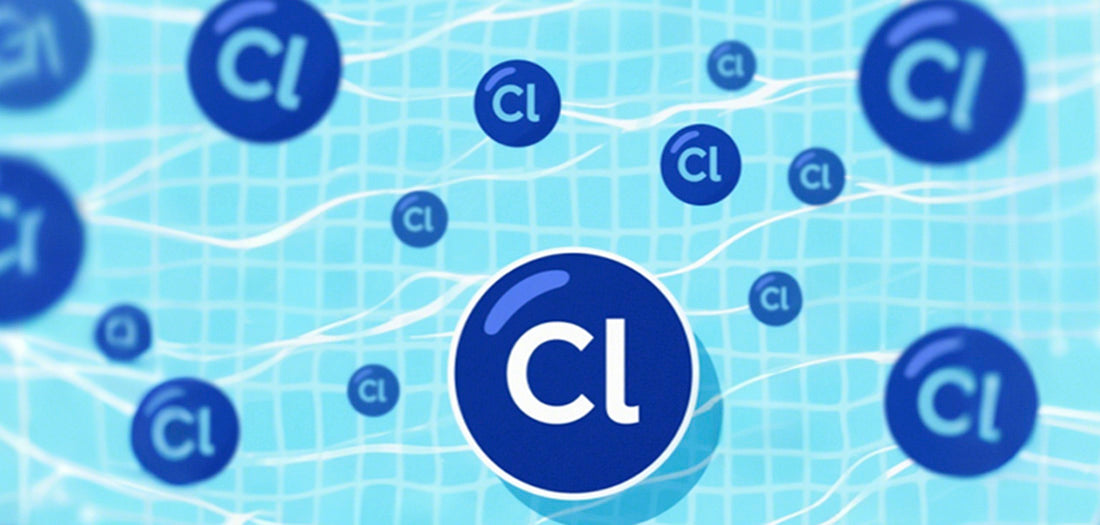
Boosting Free Chlorine Levels: A Guide to a Safe and Clear Pool
Share
Maintaining the right chlorine levels is crucial for keeping your pool clean and safe. If your free chlorine level dips below 1 part per million (ppm), your pool is at risk of harboring bacteria and algae. So, what do you do when adding chlorine tablets or granules doesn’t seem to work? Let’s break it down.
Understanding Free Chlorine
Free chlorine is the active sanitizer in your pool, responsible for keeping the water clear and free of harmful microorganisms. Ideally, your free chlorine level should be between 1-3 ppm. If it drops too low, contaminants can take over.
On the other hand, combined chlorine (or chloramines) forms when chlorine binds with contaminants. If combined chlorine levels rise above 0.5 ppm, the chlorine loses effectiveness and produces a strong chemical odor. Total chlorine is simply the sum of free and combined chlorine—when they’re equal, all your chlorine is still available for sanitation.
Why Is Your Free Chlorine Low?
Several factors can cause a dip in free chlorine, and pinpointing the cause is the first step toward fixing it.
- High Chlorine Demand
A busy pool with lots of swimmers, leaves, and debris requires more chlorine. Heavy rain can also introduce contaminants, overwhelming your sanitizer. If chlorine levels stay low even after adding shock, you may have a high chlorine demand issue. The solution? Triple-shock your pool with calcium hypochlorite (cal-hypo) shock, using three pounds per 10,000 gallons of water.
- Frequent Pool Use
Sunscreen, body oils, and sweat can consume chlorine quickly. If your pool sees a lot of action, make it a habit to shock the water weekly, especially after gatherings.
- Sun Exposure and Low Cyanuric Acid Levels
If you’re using unstabilized chlorine, like liquid chlorine or bleach, sunlight can rapidly deplete it. To prevent this, test your cyanuric acid (CYA) levels and use a stabilizer to protect your chlorine from breaking down.
- Excess Cyanuric Acid
While CYA helps stabilize chlorine, too much can reduce its effectiveness. If you use trichlor tablets, they gradually increase CYA levels. Keep your CYA between 30-50 ppm for optimal results.
- Organic Contaminants from Rain or Debris
After heavy rain or storms, organic material can enter your pool, consuming chlorine rapidly. Remove debris and shock your pool to restore sanitizer levels.
- Fresh Water Dilution
Refilling your pool with fresh water dilutes chlorine levels. After adding water, test and adjust your chemicals as needed.
- Not Enough Chlorine Added
If chlorine tablets or floaters aren’t dispersing enough chlorine, your levels may stay low. Ensure your pool gets a steady supply of sanitizer.
- Low Salt Levels in Saltwater Pools
If you have a saltwater pool, low salt levels can hinder chlorine production. Test your salinity monthly and check that your salt cell is functioning properly.
Steps to Raise Free Chlorine Levels
- Clean Your Pool – Remove debris to reduce chlorine demand.
- Balance Your Water – Test and adjust pH, alkalinity, and cyanuric acid levels.
- Shock Your Pool – Use the right shock treatment:
- For traditional chlorine pools: Use cal-hypo shock at night and wait 8 hours before swimming.
- For saltwater pools: Use sodium dichlor shock, but avoid it if your CYA is already high. In that case, opt for liquid chlorine instead.
Why Is My Free Chlorine Still Low After Shocking?
If your chlorine levels don’t improve, consider these factors:
- Imbalanced pool chemistry – If pH or CYA is off, chlorine won’t work properly.
- High contaminant levels – If your pool appears dusty or cloudy, you may have an algae issue requiring stronger shock treatment.
Constantly Low Free Chlorine? Here’s What to Check
If your chlorine levels are always low:
- Low CYA can cause chlorine to burn off too quickly in sunlight.
- High chlorine demand means chlorine is being used up faster than it can be added.
- Saltwater pools may need additional salt or maintenance on the salt cell.
FAQs About Raising Free Chlorine Levels
Q: What should I do if my free chlorine is too low?
A: Add more chlorine and test the water. If that doesn’t work, shock your pool.
Q: How much shock do I need?
A: For cal-hypo shock, use 1 pound per 10,000 gallons of water.
Q: Does non-chlorine shock increase free chlorine?
A: No, but it does eliminate chloramines, improving chlorine efficiency.
A: What’s more important, free chlorine or total chlorine?
A: Free chlorine is key—ensure it’s always higher than combined chlorine for effective sanitation.
By following these steps, you can keep your pool water clear, balanced, and safe all season long!
